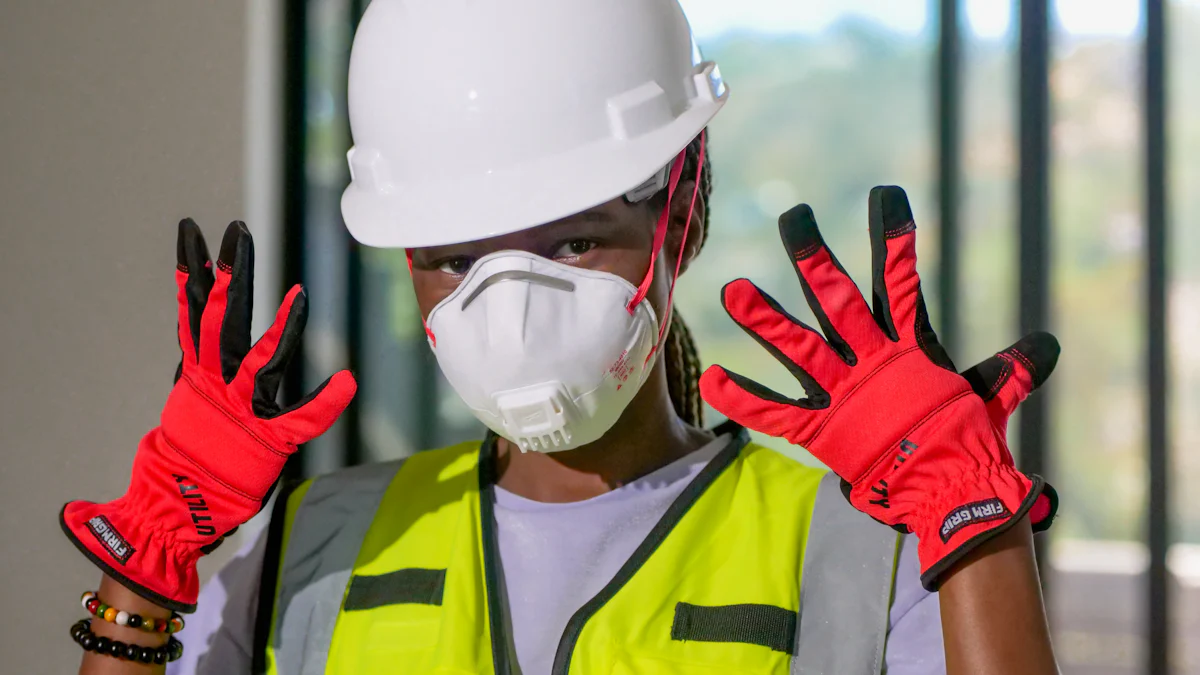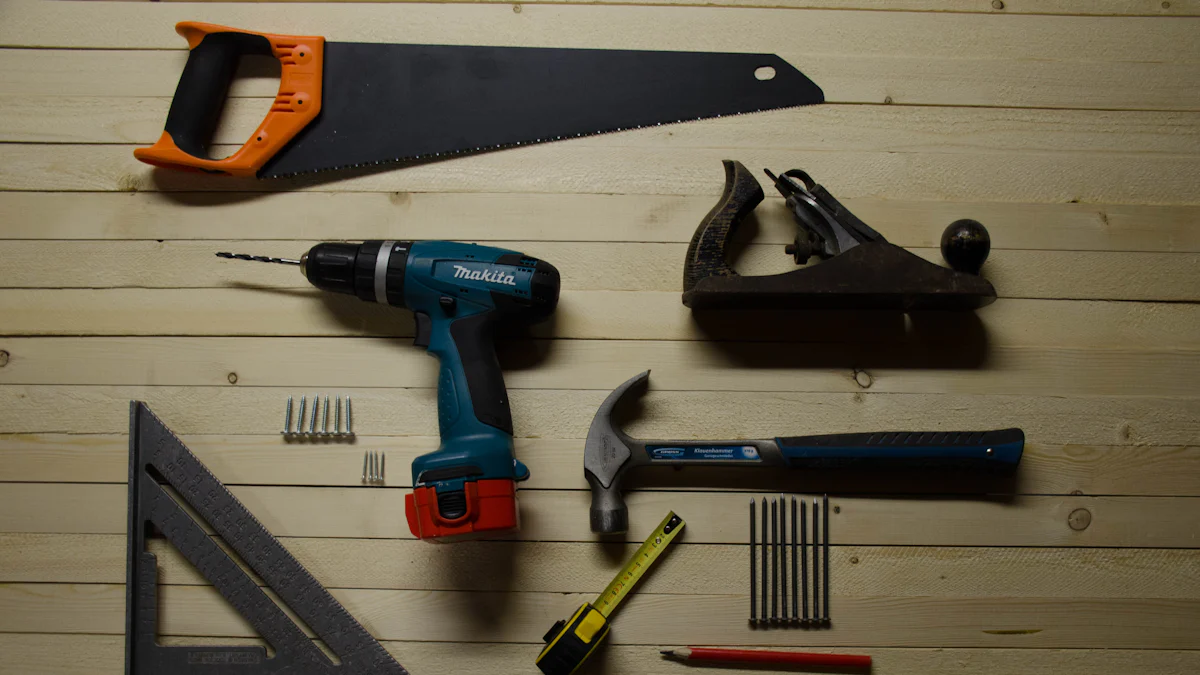
When using metal roof cutting tools, prioritizing safety is paramount to prevent accidents and injuries. This blog will provide essential tips to ensure a secure working environment. Understanding the importance of safety measures can significantly reduce risks associated with rooftop work. Additionally, being aware of common rooftop safety hazards is crucial for maintaining a safe workspace.
Use Proper Metal Roof Safety Equipment

When working with metal roof cutting tools, ensuring the use of proper safety equipment is essential to prevent accidents and injuries. Roofers typically utilize a variety of safety gear to protect themselves while working at heights. These safety gears can include items such as harnesses, safety ropes, hard hats, safety glasses, slip-resistant shoes, gloves, safety nets, and guardrails.
Essential Equipment
- Harnesses and Safety Ropes: A roofing safety harness is part of an entire personal fall arrest system. It includes the harness, lanyard, rope-grab, rope, and a roof anchor.
- Rubber-Soled Shoes: Wearing rubber-soled shoes with a good tread pattern can help improve traction and reduce the risk of slipping while working on a metal roof.
Metal Roof Safety Equipment
- Ridge Pro System: The Ridge Pro system provides additional security with its ridge anchor design that ensures stability when working on metal roofs.
- Standing Seam Roof Anchors: Utilizing standing seam roof anchors enhances safety by providing secure attachment points for workers using metal roof cutting tools.
Conduct a Thorough Roof Inspection
When it comes to roof safety, conducting a thorough roof inspection is a critical step in ensuring a secure working environment. By examining the roof carefully, workers can identify potential hazards and take necessary precautions to prevent accidents.
Importance of Roof Inspection
Inspecting the roof using Roof Inspection Software can streamline the process and provide detailed insights into the condition of the roof. This software allows workers to document findings, track maintenance tasks, and ensure that all safety measures are in place.
Identifying potential hazards during the inspection is crucial for maintaining a safe workspace. By recognizing issues such as loose shingles, rusted areas, or weak spots, workers can address these concerns promptly and avoid accidents down the line.
Roof Safety Signs
Implementing roof safety signs is an effective way to communicate important information and prevent common roofing accidents. These signs serve as visual reminders for workers to follow safety protocols and remain vigilant while working at heights.
By emphasizing construction management practices through clear signage, workers can stay informed about potential risks and adhere to safety guidelines. Regularly updating safety signs based on evolving hazards ensures that everyone on the rooftop is aware of their surroundings.
Ensure Proper Training and Communication
When it comes to Construction Safety Training, ensuring that workers receive the necessary guidance is crucial for maintaining a secure work environment. Regular Safety Meetings provide a platform for discussing safety protocols, addressing concerns, and reinforcing best practices. These meetings serve as an opportunity to educate workers on potential hazards and emphasize the importance of adhering to safety guidelines.
Implementing a Rooftop Safety Checklist can help streamline safety procedures and ensure that all necessary precautions are taken before commencing work. By following a structured checklist, workers can systematically assess risks, verify safety equipment usage, and confirm proper communication channels.
For training related to Metal Roof Cutting Tools, emphasizing Safe Handling Techniques is paramount. Workers should be trained on how to handle tools safely, maintain equipment properly, and recognize warning signs of tool malfunctions. Additionally, establishing clear Communication Protocols ensures that workers can effectively convey safety concerns, report incidents promptly, and coordinate emergency responses efficiently.
Incorporating Construction Training Software into safety programs can enhance training efficiency by providing interactive modules, quizzes, and progress tracking. This software enables workers to engage with safety materials effectively and reinforces learning outcomes through practical applications.
Use the Right Tools and Techniques

When it comes to metal roof cutting tools, selecting the appropriate tools is crucial for ensuring efficiency and safety. Metal cutting wheels are essential for precise cuts on metal roofing panels, offering a quick and effective way to trim edges and create openings. Additionally, band saws designed for metal provide a versatile cutting solution, allowing workers to make intricate cuts with ease.
Choosing the Right Tools
- Metal Cutting Wheels: These specialized wheels are designed to cut through metal surfaces smoothly, providing clean edges without causing damage to the material. By using high-quality metal cutting wheels, workers can enhance their cutting precision and complete tasks efficiently.
- Band Saws for Metal: Band saws equipped with blades specifically made for metal offer a reliable cutting solution for various metal roofing projects. The adjustable speed settings and blade options make band saws versatile tools that can handle different thicknesses of metal panels effectively.
Proper Cutting Techniques
To ensure safety and maintain the integrity of the material, workers must follow proper cutting techniques when using metal roof cutting tools. Avoiding overheating during the cutting process is essential to prevent damage to both the tool and the metal surface. By maintaining consistent pressure and speed while cutting, workers can minimize heat buildup and achieve clean cuts.
To prevent material damage, it is important to use sharp blades suitable for metal roofing materials. Dull blades can cause jagged edges, leading to potential hazards during installation or handling. Regularly inspecting blades for wear and tear ensures that they remain in optimal condition for efficient cutting operations.
By utilizing the right tools and following recommended techniques, workers can enhance their productivity while maintaining a safe working environment on rooftops.
Monitor Weather Conditions and Roof Stability
When it comes to roof safety, being aware of weather conditions and roof stability is crucial for ensuring a secure working environment. Extreme weather conditions, such as heavy winds, hail, and flying debris, can impact the structural integrity of roofing systems. Metal roofs have proven successful in minimizing damage in hurricane-prone areas.
Weather Considerations
Inspecting the roof yearly is essential to identify any potential hazards that may arise due to extreme weather conditions. Avoiding work in wet conditions is paramount to prevent accidents and ensure worker safety. Waiting for ideal weather before commencing roofing work can help minimize risks associated with slippery surfaces and reduce the chances of accidents.
Checking for ice and snow buildup on the roof is necessary to prevent slips and falls during inclement weather. By monitoring weather forecasts regularly, workers can plan their tasks accordingly and prioritize safety measures based on changing weather patterns.
Ensuring Roof Stability
Maintaining roof stability is fundamental for creating a safe workspace for roofers. Hazards such as heat stroke, dehydration, and slippery conditions can directly impact workers when exposed to extreme heat or cold. Scheduling work during less severe weather conditions is crucial to prevent injuries and ensure a secure working environment.
Regularly inspecting the roof for signs of damage, especially in rusted areas, helps prevent accidents caused by weakened structures. By addressing rusted areas promptly and reinforcing weak spots, workers can enhance roof stability and minimize risks associated with structural failures.
In the realm of roofing work, safety stands as a non-negotiable aspect to prevent accidents and ensure worker well-being. Employers must adhere to OSHA regulations and provide comprehensive safety training to mitigate falls and hazards effectively. Prioritizing safety not only safeguards workers but also upholds industry standards for a secure work environment. Identifying and controlling rooftop hazards is paramount, emphasizing the critical need for employers to protect their workforce through stringent safety protocols.
